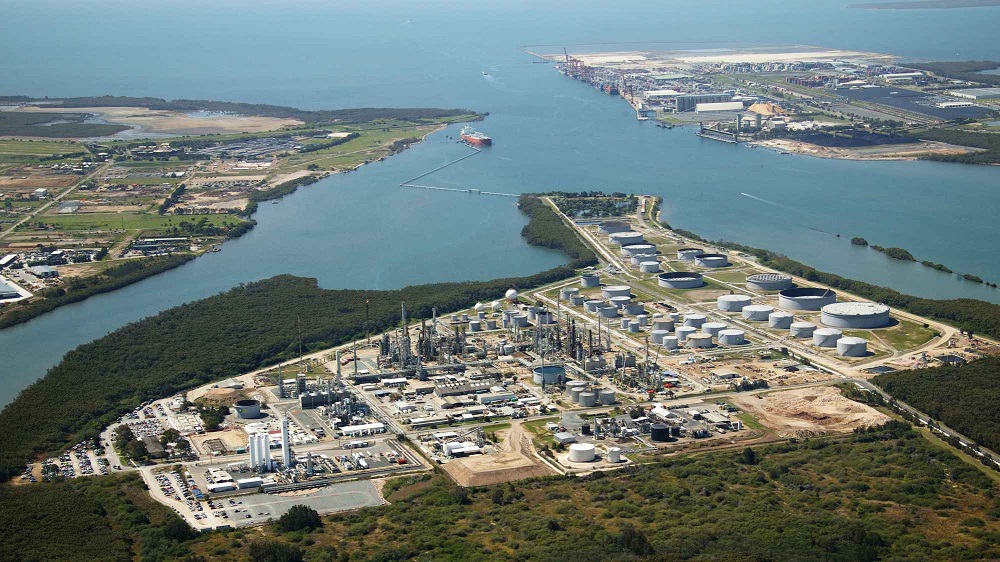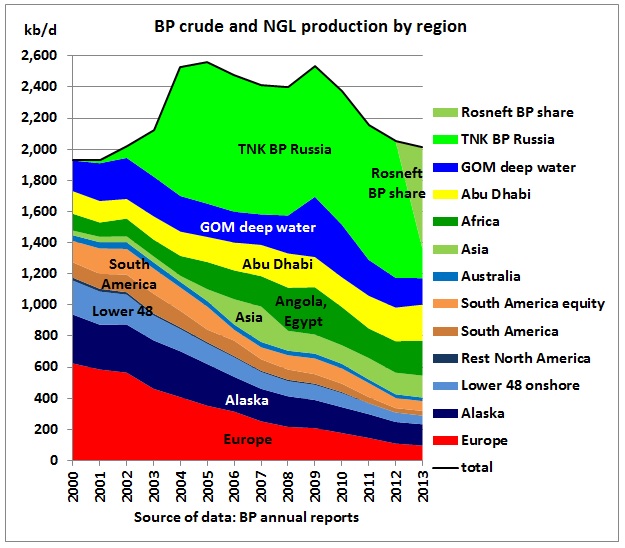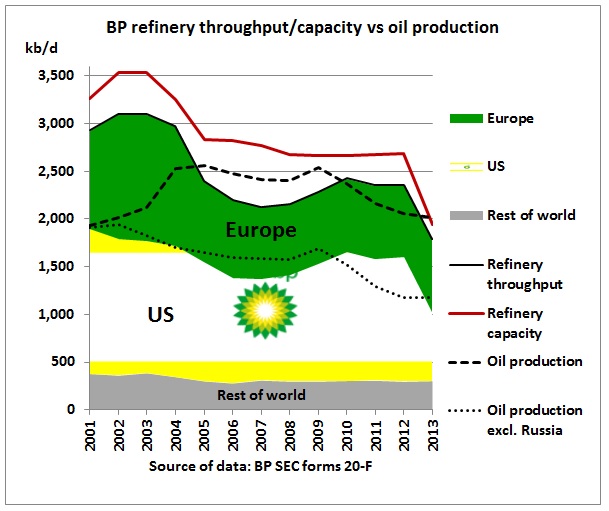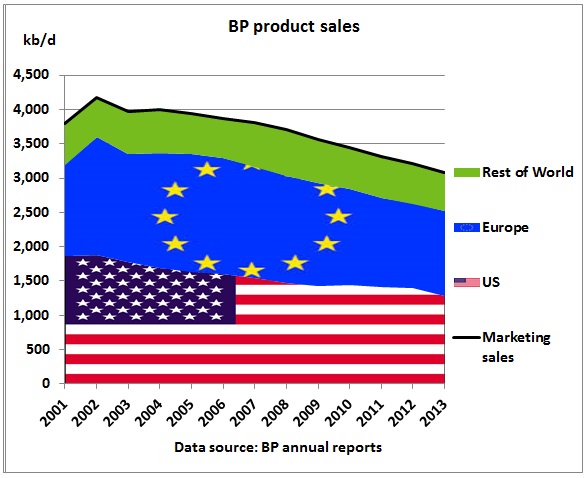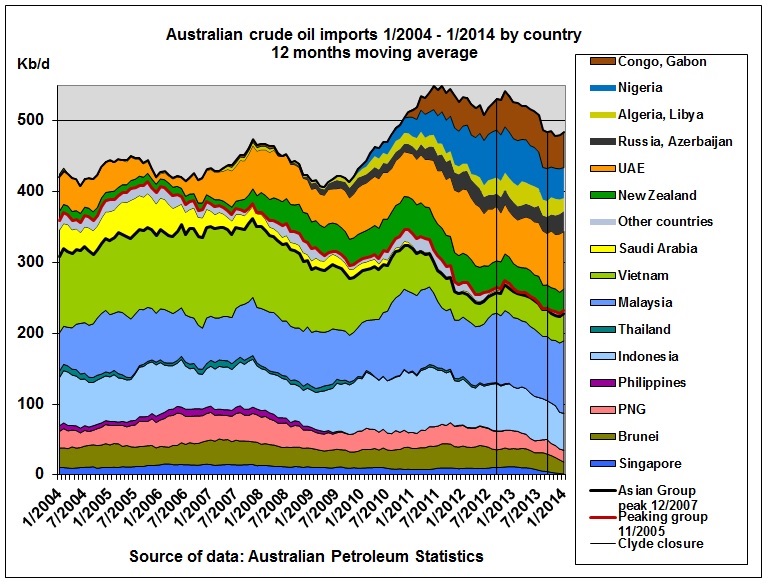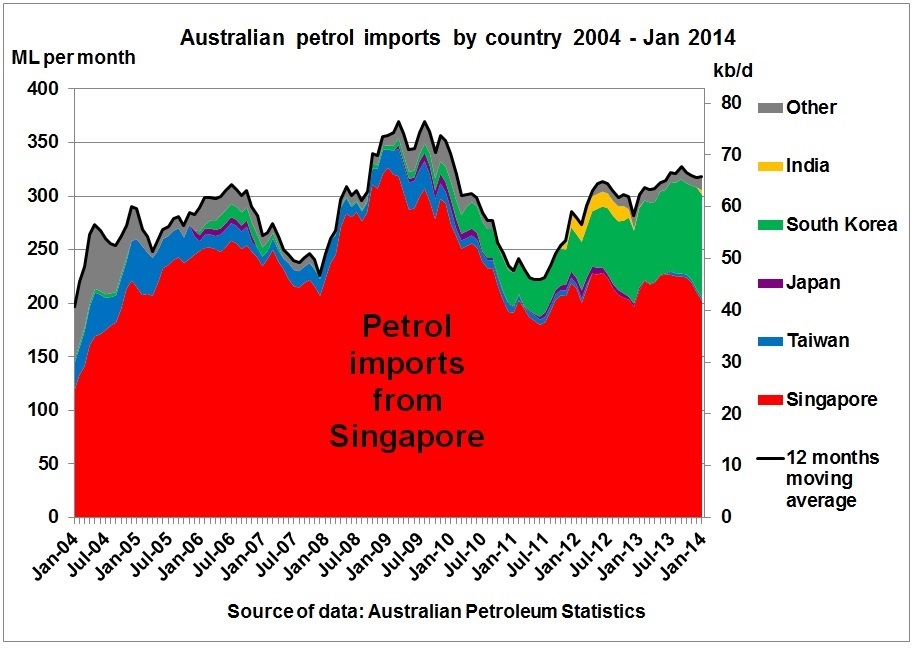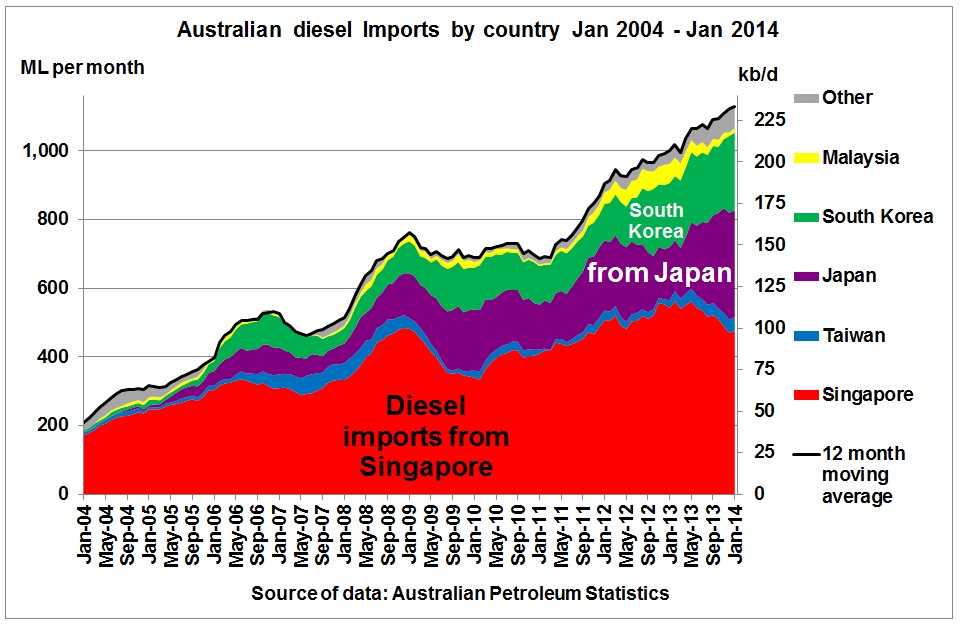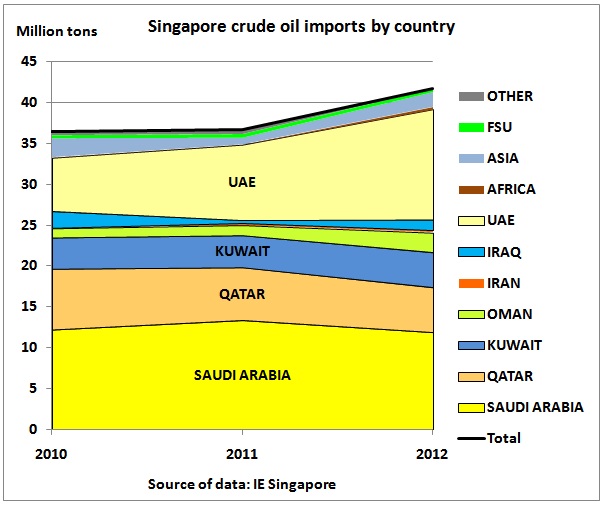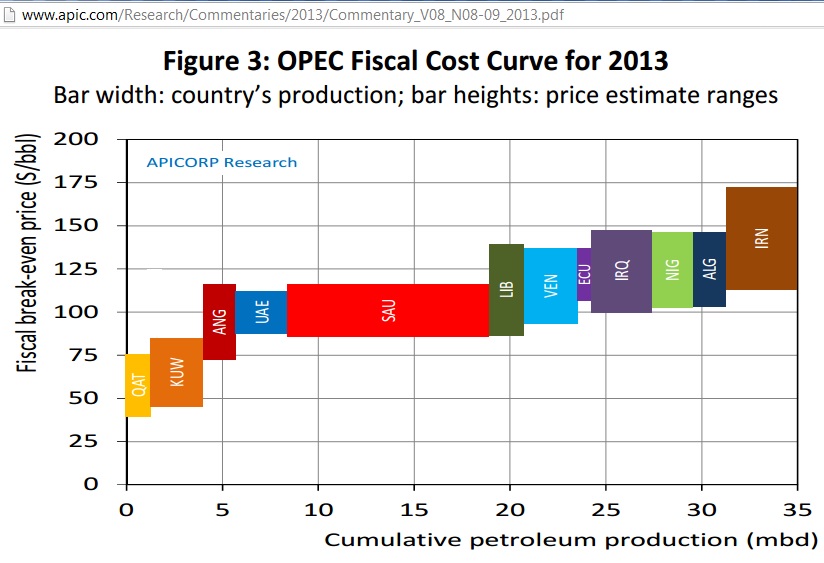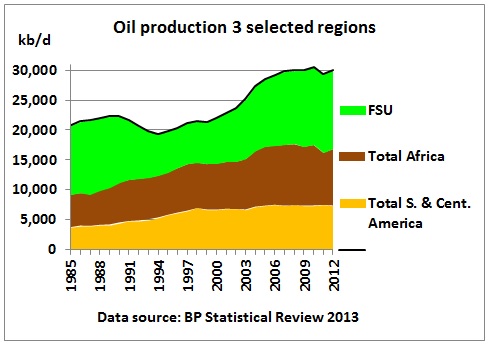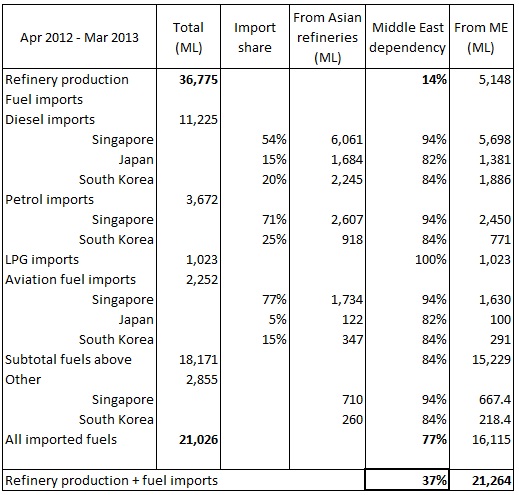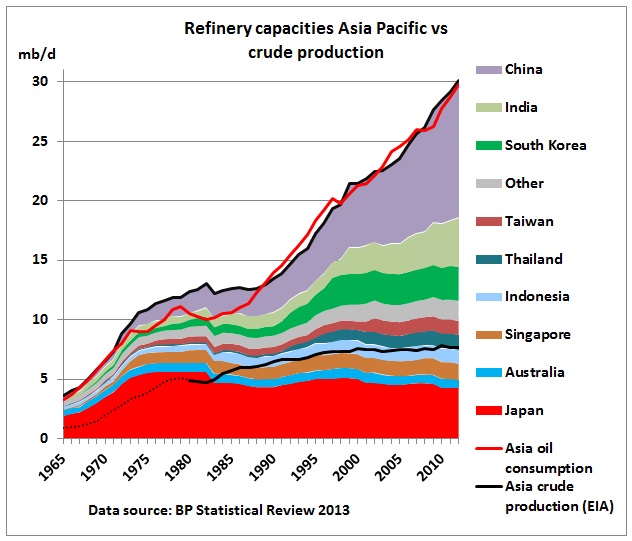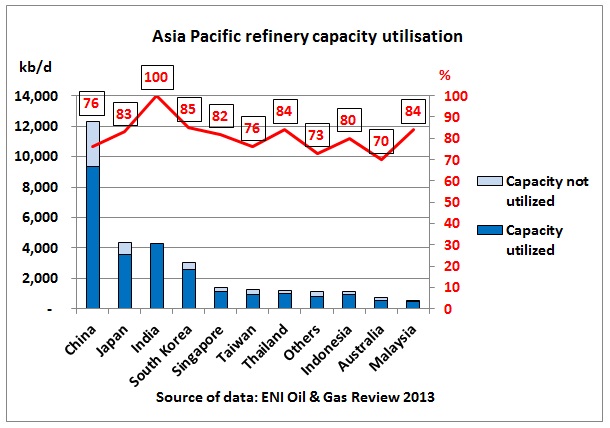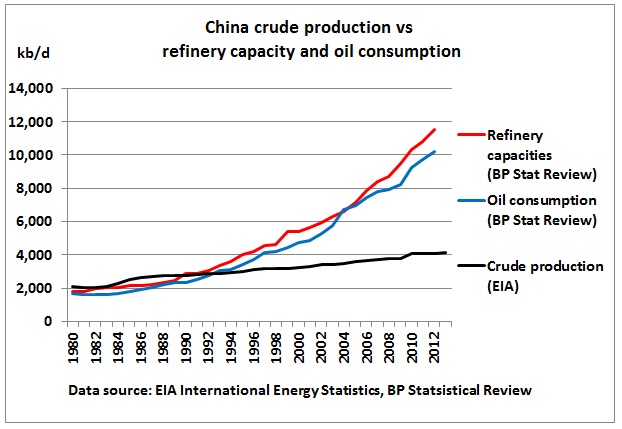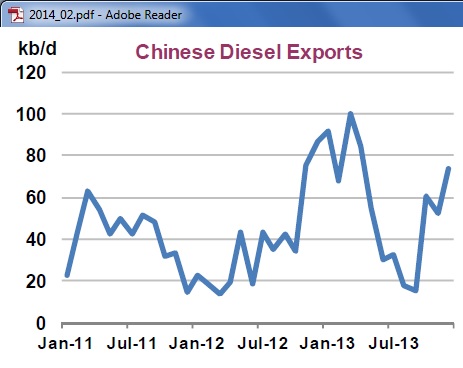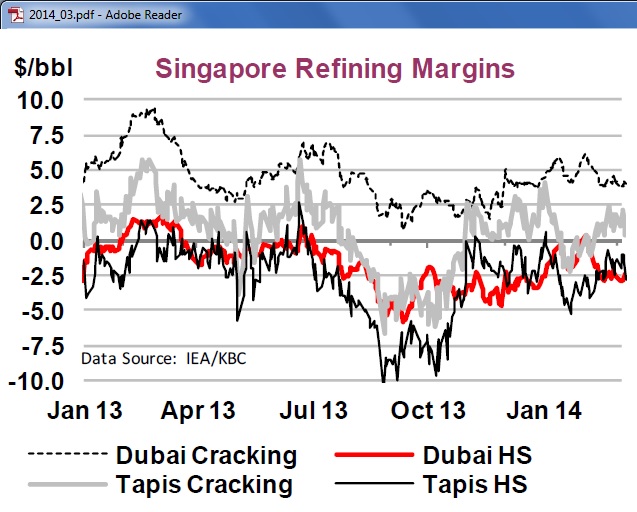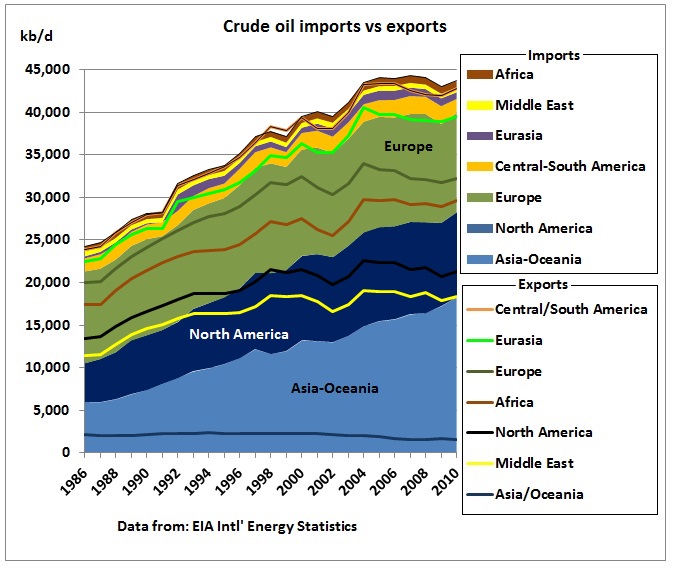Contrary to BP’s media statement the closure of the Bulwer refinery in Brisbane will reduce Australia’s energy security because Australia’s crude oil imports as refinery feedstock come from a dozen or so countries while fuel imports are mainly sourced from just 3 (non-oil producing) countries: Singapore, South Korea and Japan, all of them heavily relying on crude imports from the Middle East.
This post shows statistical evidence that BP, like all other International Oil Companies, is in full peak oil mode. China’s overhang of refining capacity shows that too many refineries have been built compared to limited and costly crude oil supplies. There is a big question mark over the volume and reliability of Asia’s future crude imports from the Middle East while alternative sources from other regions of the world also have their limitations. Russia is approaching its 2nd and last production peak. Africa’s and Latin America’s oil production is also at peak.
What is actually a big problem has been presented by BP as an advantage for Australian motorists. This will turn out to be very short-lived as the refining sector continues to dismantle itself without that natural gas as alternative transport fuel is being developed and while most of Australia’s gas is exported.
BP’s Bulwer refinery in Brisbane http://www.bp.com
Capacity: 102 kb/d (Nelson Complexity Index 7.3)
- Aviation fuel: 10 kbpd
- Gasolines: 27 kbpd
- Middle distillates: 37 kbpd
- Other products: 9 kbpd
http://www.bp.com/content/dam/bp/pdf/abp_wwd_australia_bulwer_fact_sheet_june_2011.pdf
BP to close Bulwer Island refinery in Brisbane: hundreds of jobs axed
2/4/2014
Andy Holmes, president of BP Australasia, told a press conference in Melbourne that the refinery was being closed because the emergence of major export-based refineries in Asia operating on a lower cost base had “transformed the industry”.
http://www.abc.net.au/news/2014-04-02/bp-to-close-bulwer-island-refinery-brisbane-jobs-axed/5361296
1 Statistics from BP’s annual reports show peaking
We first need to understand what is happening with BP. All data are from here:
http://www.bp.com/en/global/corporate/investors/annual-reporting/archive.html
BP’s oil production outside Russia is in full decline. The secondary peak was caused by Gulf of Mexico reaching maximum production in 2009 (Thunder Horse, Atlantis and Mad Dog) shortly before the Deepwater Horizon accident.
BP’s refinery capacities have been reduced in line with declining production. The latest drop was the divestment of the Texas City and Carson refineries.
BP’s product sales are also in long term decline
We now examine statements made by BP’s Australasia president in the above quoted media event:
2 Australia’s crude imports come from diverse sources
HOLMES: “Australia’s energy security: access to secure and competitively priced energy has helped support Australia’s growth for decades. We don’t believe that today’s decision will impact on Australia’s energy security. Australia is well served by diverse, regionally integrated and reliable supply chains. We know from experience that these supply chains have effectively and efficiently delivered competitively priced fuels to customers through disruptions and through the demand growth we have experienced both domestically and in China. The market system has responded well to these challenges.”
Analysis:
In relation to diversity and security there is a big difference between importing crude oil as refinery feedstock and importing fuels directly from Asian oversees suppliers. These are Australia’s crude oil imports:
All data are from here:
http://www.bree.gov.au/publications/australian-petroleum-statistics
Crude imports vary from month to month so the 12 months moving average is shown. Imports from South East Asia have peaked in Dec 2007 because oil production in these countries has peaked and is in long term decline (see below). Australian refineries have been very successful to offset this oil import decline by importing oil from other areas of the world, in particular Africa, which actually brought about some import growth. The vertical lines mark the closure of the Clyde refinery in Sydney. The 1st line is the month of closure, the 2nd line one (statistical) year later when the full impact of the moving average shows up in the curves. So crude oil imports are now on a lower level, but the underlying decline trend started earlier.
Australia’s diverse crude oil imports before and after the Clyde refinery closure. The very high Simpson diversity index http://en.wikipedia.org/wiki/Diversity_index of 89% has only decreased by 1%. Note that crude imports from the Middle East (UAE) are “only” 17%. Less crude oil is now being imported from unreliable Nigeria (-23%) and declining Indonesia (-13%).
3 Australia’s fuel imports do NOT come from diverse sources
HOLMES: “Also, as Australia is a price taker in the region, the decision on whether to refine or to import petrol does not have an impact on Australia’s wholesale or retail fuel prices.”
Analysis:
That may be the case but the decision to import fuels rather than crude oil has an impact on the diversity of supplies. Australia’s fuel imports are NOT from diverse sources:
Petrol imports from Singapore are 64% and from South Korea 30% of total imports.
Diesel imports from Singapore are 42%, from Japan 28% and from South Korea 20% of total imports.
Singapore is almost entirely dependent on crude oil imports from the Middle East:
All ME suppliers need high oil prices to support their budgets
More details in this post:
14/8/2013 OPEC’s average fiscal break-even oil price increases by 7% in 2013
http://crudeoilpeak.info/opec-fiscal-breakeven-oil-price-increases-7-in-2013
Using data from BP’s Statistical Review (inter area movements) this graph for all Asian refineries shows that although there has been some diversification the dependence on the Middle East was still 67% in 2012 (down from 86% in 2001). Compare that to Australia’s ME crude oil dependence of 17% (see above). Future diversification into Africa, the former Soviet Union and Latin America will become increasingly difficult as oil production in these 3 regions is at peak:
So there will be many fights about getting the feedstock for all the Asian refineries.
4 Australia’s Middle East dependence was 37% in 2012/13
An earlier article on this website calculated:
24/6/2013 Australian oil and fuel dependency on the Middle East is 37%
http://crudeoilpeak.info/australian-oil-and-fuel-dependency-on-the-middle-east-is-37
5 South East Asian crude oil production is in permanent decline
One reason for refinery closures in Australia is that the traditional, neighbouring crude suppliers for Australian refineries are in permanent decline:
This graph tells you everything about what is hyped as the Asian Century. It will be characterised by continuing oil decline and a fight for oil imports.
6 Refinery capacity overhang reflects limited crude supplies and weak demand
HOLMES: “There is a shift to greater interest and investment in product import facilities along Australia’s coast, taking advantage of the supply overhang of refined products in the region. And to meet growing demand, there will need to be ongoing investment in jetty space, and bulk storage facilities and it is important that the industry is able to build this capacity efficiently. It is likely that there will be more partnerships and it is important that competition policy settings ensure that the industry can cost effectively build this additional infrastructure.”
Analysis:
According to the BP Statistical Review oil consumption in Asia as a whole has pretty much followed refinery capacities on a steep growth path. The main problem is the ever growing gap between this consumption and local crude oil production which is apparently flattening out (black curve).
A supply overhang of refined products would show up as low refinery utilisation rates. According to
ENI’s Oil and Gas Review of 2013
http://www.eni.com/world-oil-gas-review-2013/O-G_2013_WEB.pdf
Asian utilisation rates in 2012 were just average
- Europe 78%
- Russia and Central Asia 90%
- Middle East 84%
- Africa 70%
- Asia Pacific 82%
- Americas 83%
- World 82%
But China’s utilisation rates are low at 76%
Apparently China built too many refineries while global crude production started to peak in 2005.
For comparison, the above table shows the utilisation rates of other selected countries together with the complexity indices FCC (fluid catalytic cracking) and NCI (Nelson complexity index)
China’s crude oil production has increased by only 2% in the last 3 years while refinery capacities went up by between 6 and 8 %, running ahead of oil demand. There is talk about Chinese oil product exports. But look at how small and unreliable they are:
http://omrpublic.iea.org/omrarchive/13feb2014fullpub.pdf
In the last 12 months Australia imported 1% of its diesel from China, in completely irregular deliveries.
Singapore is much more important. From IEA’s monthly oil market report of Dec 2013:
http://omrpublic.iea.org/omrarchive/14mar2014fullpub.pdf
We see that over many months simple hydro skimming
http://en.wikipedia.org/wiki/Hydroskimming
yielded negative margins and that cracking of local Tapis oil is hardly profitable. This suggests that there are good short term deals for motorists but in the long term this is not sustainable.
7 Asia’s energy growth areas will bump into limited global crude oil supplies
HOLMES: “Turning to structural changes in the industry. I have already touched on the changes occurring within the sector but it’s worth repeating. The market reality is that global refining capacity is shifting to service the energy growth areas of the globe and in doing so very large, export based refineries, fortunately for Australia, are based in our region. Over the same period, we have seen refining capacities decrease in the slower energy growth countries. BP Statistical Review Energy indicates over the last 5 years Germany, France and the UK have all experienced reductions in refining capacity. It’s a similar story for Australia. Over the past decade we have seen refinery closures with each decision based, importantly, on the circumstances particular to the operating characteristics and the supply model of the refinery in question. As these refineries have closed we have seen an increase in product import capacity and the growth of entrance into the sector.”
Analysis:
While referring to Europe’s refinery shrinkage, BP’s own 2013 divestments in the US and even Singapore have not been mentioned:
The Texas City (475 kb/d) refinery was sold in February 2013
http://www.bp.com/en/global/corporate/press/press-releases/bp-completes-sale-of-texas-city-refinery-and-related-assets-to-marathon-petroleum.html
and the Carson refinery (266 kb/d) was sold in June 2013
http://www.bp.com/en/global/corporate/press/press-releases/bp-completes-sale-of-carson-refinery-and-southwest-u-s–retail-a.html
And how about those low-cost Asian refineries?
Already in February 2004, BP sold its stake in the Singapore Refining Company (285 kb/d)
http://www.bp.com/en/global/corporate/press/press-releases/bp-to-sell-its-stake-in-singapore-refining-company-to-spc.html
The structural changes in the refining industry indeed become clear when looking at refining capacities in the BP Statistical Review:
An overhang of refining capacity compared to oil production emerged after the oil crises in 1973 (peak oil 1971 in the US) and 1979 (peak oil in Iran). In response to these oil shocks and higher oil prices, Europe became more fuel efficient and reduced refinery capacities. To a lesser extent, the US also reduced refining capacities after the 1970s. A global recovery and growth of crude production allowed China and India to build new refineries but the fun lasted only until 2005, where we can see a kink in the crude oil production curve (red dots). Crude oil is the most important refinery feedstock. We are now in the 3rd oil crisis. Countries which did not foresee this coming are now sitting on overcapacities.
8 Global crude oil exports at peak: the zero sum game
HOLMES: “Australia is well served by diverse and reliable supply chains, capitalizing on the overhang of refined products in the Asia Pacific region. In future the industry will channel investment into product imports and distribution infrastructure and sharing rather than duplicating should be the norm. Finally, what can you expect from us? You can expect a safer, stronger and better BP. BP is in Australia since 1919 and it is our intention to be here for many more years to come.”
The gap between stagnating Asian crude production and increasing consumption has been filled in the past by imports but how will it be filled in future?
In this graph, areas show imports and lines denote exports. Data are from the EIA but due to their slow processing of data these are only available until 2010.
Global crude oil exports/imports have been basically flat since 2005 while Asia’s imports have been growing, a conflict of trends which cannot continue indefinitely without consequences for oil prices and thus economies. Asia’s growth since 2005 has come at the cost of North America and Europe. We can see that – just by way of calculation – Asia would consume all exports of the Middle East. So we have a zero sum game in which the weakest refineries will go first. How this will evolve in future we do not know. It is likely that fuel supplies will be less reliable than in the past. This reality is in total contrast to BP’s assurances.
Conclusion: Australia’s fuel imports neither come from diverse sources nor are they secure because Asian refineries depend heavily on the Middle East for crude oil imports. Needless to say the Middle East is a powder keg. Once US shale oil peaks before 2020, Australia will feel the pain of being a price taker. The BP statement did not alert Australian motorists to the facts that BP’s oil production and product sales are in long term decline and that South East Asian crude oil production is also in terminal decline. These are unacceptable omissions which will result in mis-investments in oil dependent infrastructure. The closure of refineries is part of peak oil and comes without developing natural gas as alternative transport fuel. A smooth transition away from oil isn’t happening.
Related posts: Click on search category “Australian refineries”
11/3/2013
International oil companies’ oil production peaked in 2004 and declined by 2.1% pa
http://crudeoilpeak.info/international-oil-companies-oil-production-peaked-in-2004-and-declined-by-2-1-pa
